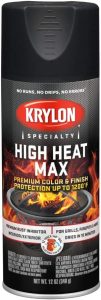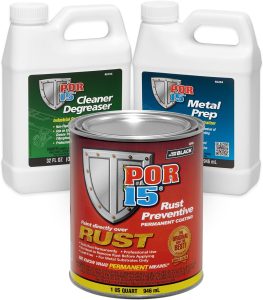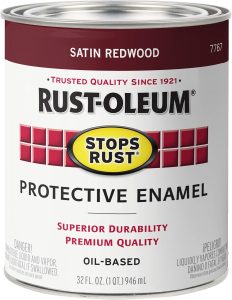Propane tanks, whether used for home heating, grilling, or industrial purposes, are exposed to harsh environmental conditions—sun, rain, humidity, and temperature fluctuations. These factors can lead to rust, corrosion, and surface damage over time. That’s why choosing the best paint for propane tanks is essential—not only to preserve the appearance but also to maintain safety and extend the tank’s lifespan.
We’ll dive into why it’s important to paint your propane tank, the best types of paint to use, and how to apply the paint properly to ensure your tank remains in top condition. Let’s explore the best paint options, tips for painting propane tanks, and answer some frequently asked questions.
Why Paint Your Propane Tank?
Before we look at the specific paints available for propane tanks, let’s first understand the importance of painting these tanks.
1. Protection Against Rust and Corrosion
Propane tanks are typically made from steel or aluminum, both of which can rust and corrode when exposed to moisture and the elements. Rust can weaken the tank’s structure and compromise its integrity. By painting the propane tank, you create a protective barrier that helps prevent moisture from reaching the surface and causing rust.
2. Enhanced Aesthetics
A fresh coat of paint can improve the appearance of a propane tank, especially if it’s located in a highly visible area, such as your backyard or patio. By choosing the right color and finish, you can make the tank blend in with the surroundings or match the color of your home or outdoor decor.
3. UV Protection
The sun’s ultraviolet (UV) rays can break down the surface of the propane tank, causing it to fade, crack, or deteriorate. UV-resistant paint helps protect the metal from these harmful rays and keeps the tank looking new for longer.
4. Temperature Regulation
Dark-colored paints absorb heat, while lighter-colored paints reflect it. Painting your propane tank with the right color can help regulate its internal temperature, preventing it from becoming too hot in direct sunlight, which can cause safety issues with gas pressure.
What to Look for Best Paint for Propane Tanks
When selecting paint for a propane tank, there are several key factors to consider to ensure that the paint is suitable for metal surfaces, provides adequate protection, and is safe to use.
1. Rust and Corrosion Resistance
The paint should offer excellent protection against rust and corrosion, especially since propane tanks are exposed to moisture and humidity. Paints formulated for metal surfaces with built-in rust inhibitors will help prevent the development of rust on the tank’s surface.
2. High-Temperature Resistance
Propane tanks are exposed to temperature fluctuations. Paint that can withstand high heat is essential. Look for paints labeled as “heat-resistant” or designed for metal surfaces subjected to high temperatures.
3. UV Protection
For outdoor propane tanks, UV protection is vital. Choose a paint that offers protection against the sun’s rays to prevent fading, cracking, or peeling over time.
4. Durability and Adhesion
The paint must be durable enough to handle the wear and tear of outdoor conditions, as well as regular handling. It should be able to adhere well to metal surfaces, including steel and aluminum.
5. Safety
Because propane is a flammable gas, safety is a primary concern when choosing paint for a propane tank. You must select a paint that is specifically formulated for use on tanks and is designed to handle the conditions that tanks are exposed to. Always check the paint manufacturer’s guidelines to ensure it’s suitable for use on propane tanks.
6. Ease of Application
Painting your propane tank should be a straightforward process. Paint that can be easily applied using a brush, roller, or spray can will save you time and effort.
The Best Paints for Propane Tanks
Here are some of the best paint options available for painting propane tanks. These paints offer the durability, heat resistance, and rust protection that are essential for keeping your tank in top condition.
1. Rust-Oleum High Heat Enamel Spray Paint

Rust-Oleum High Heat Enamel is a trusted brand known for its ability to withstand high temperatures and provide superior protection against rust and corrosion. This spray paint is ideal for propane tanks exposed to both heat and moisture.
Why It’s Great for Propane Tanks:
- Heat Resistance: Can withstand temperatures up to 1,200°F (648°C), making it ideal for use on propane tanks.
- Rust Prevention: The formula includes rust inhibitors to prevent corrosion.
- Durability: Offers a durable, long-lasting finish that resists chipping, cracking, and peeling.
- Easy Application: The spray paint is easy to apply, even in hard-to-reach areas.
Best for: Outdoor propane tanks exposed to high heat and moisture.
2. Krylon High Heat Max Spray Paint

Krylon High Heat Max is another excellent option for painting propane tanks. This high-temperature paint is designed for metal surfaces, providing protection against heat, rust, and corrosion.
Why It’s Great for Propane Tanks:
- High-Temperature Resistance: Can withstand up to 1,200°F (648°C), making it suitable for use on propane tanks.
- Fast Drying: Dries to the touch in 10 minutes and is fully cured within 1 hour.
- Rust Protection: The formula provides a protective layer against rust, keeping the metal safe.
- Versatile: Available in a range of colors, making it easy to match the tank with your home or outdoor decor.
Best for: Both indoor and outdoor propane tanks that require heat resistance and corrosion protection.
3. VHT FlameProof Coating

VHT FlameProof Coating is designed specifically for high-heat environments, making it perfect for propane tanks that are exposed to significant temperature fluctuations.
Why It’s Great for Propane Tanks:
- Heat Resistance: It can handle temperatures up to 2,000°F (1,093°C), offering superior heat protection.
- Rust and Corrosion Prevention: Provides excellent rust and corrosion resistance.
- Durability: The coating is designed to resist chipping and fading, even under high heat conditions.
- Gloss Finish: Offers a glossy, clean finish that enhances the appearance of your propane tank.
Best for: Propane tanks exposed to high temperatures and harsh environmental conditions.
4. POR-15 Rust Preventive Coating

POR-15 Rust Preventive Coating is a high-performance rust-preventative paint that works exceptionally well on propane tanks, especially those that are already starting to show signs of rust.
Why It’s Great for Propane Tanks:
- Rust Prevention: POR-15 is specifically designed to prevent rust and is highly effective on metal surfaces.
- Durable and Tough: This paint provides a hard, durable finish that can withstand tough conditions.
- Corrosion Resistance: POR-15 protects against moisture, chemicals, and extreme temperatures.
- Ideal for Interior Use: While it’s mostly used for rust-prone areas, it can also be used for parts of the tank exposed to the elements.
Best for: Tanks that need rust treatment or are showing early signs of corrosion.
5. Benjamin Moore Benwood Metal & Wood Enamel Paint

Benjamin Moore offers high-quality enamel paint designed for metal surfaces, including propane tanks.
Why It’s Great for Propane Tanks:
- Durability: This enamel paint is known for its toughness and ability to withstand outdoor conditions.
- Rust Prevention: It provides excellent protection against rust and corrosion.
- Color Options: Available in a variety of colors to suit your preferences.
- UV Protection: Designed to resist fading caused by UV rays.
Best for: Propane tanks that need a long-lasting, protective finish.
How to Paint a Propane Tank: Step-by-Step Guide
Follow these steps to paint your propane tank properly:
Step 1: Clean the Tank
Start by cleaning the propane tank thoroughly. Remove dirt, oil, and debris using a mild detergent and water. Rinse the tank well and let it dry completely. If the tank has any rust, use a wire brush or sandpaper to remove it.
Step 2: Sand the Surface
Lightly sand the surface of the tank to create a smooth and rough texture for the paint to adhere to. Use fine-grit sandpaper to avoid damaging the metal.
Step 3: Apply a Rust-Inhibiting Primer (If Necessary)
If your tank has areas of rust or if you are working with bare metal, apply a rust-inhibiting primer. This step is important to ensure that the paint adheres properly and provides maximum protection.
Step 4: Apply Paint
Choose a paint designed for metal and heat resistance. Apply the paint using a brush, roller, or spray, depending on the type of paint and your preference. Apply a thin, even coat and allow it to dry completely before applying a second coat if necessary.
Step 5: Allow the Paint to Dry
After applying the final coat, allow the paint to cure completely according to the manufacturer’s instructions. Avoid using the propane tank until the paint has fully dried.
FAQ on Best Paint for Propane Tanks
1. Can I use regular paint on a propane tank?
No, it’s important to use paint specifically designed for metal surfaces and high temperatures to ensure safety and durability. Regular paint may not provide the necessary heat resistance or rust protection.
2. How often should I repaint my propane tank?
It’s a good idea to repaint your propane tank every 3-5 years, depending on its exposure to the elements and the condition of the paint.
3. Is it safe to paint a propane tank myself?
Yes, as long as you follow proper safety precautions and use the appropriate paint designed for propane tanks, it is safe to paint your tank. Always make sure the tank is empty and not in use during the painting process.
4. Can I paint the propane tank while it’s in use?
No, the tank should be emptied and disconnected from all propane sources before painting to ensure safety.
5. Can I use spray paint for my propane tank?
Yes, spray paint can provide an even, smooth finish and is often recommended for propane tanks. Just ensure you choose a spray paint designed for metal and high-temperature surfaces.
6. How long does the paint take to dry?
Drying times vary depending on the type of paint used. Typically, you should allow the paint to dry for several hours between coats and fully cure for 24-48 hours before using the tank.
7. What color should I paint my propane tank?
Lighter colors, such as white, silver, or beige, are ideal for reflecting sunlight and maintaining a cooler temperature inside the tank. However, you can choose any color that suits your aesthetic preferences.
Conclusion
Painting your propane tank is an excellent way to protect it from rust, corrosion, and other environmental factors while improving its appearance. The key is to choose a high-quality, heat-resistant paint specifically formulated for metal surfaces. With proper preparation and application, your propane tank will remain durable, safe, and attractive for years to come.


Leave a Reply